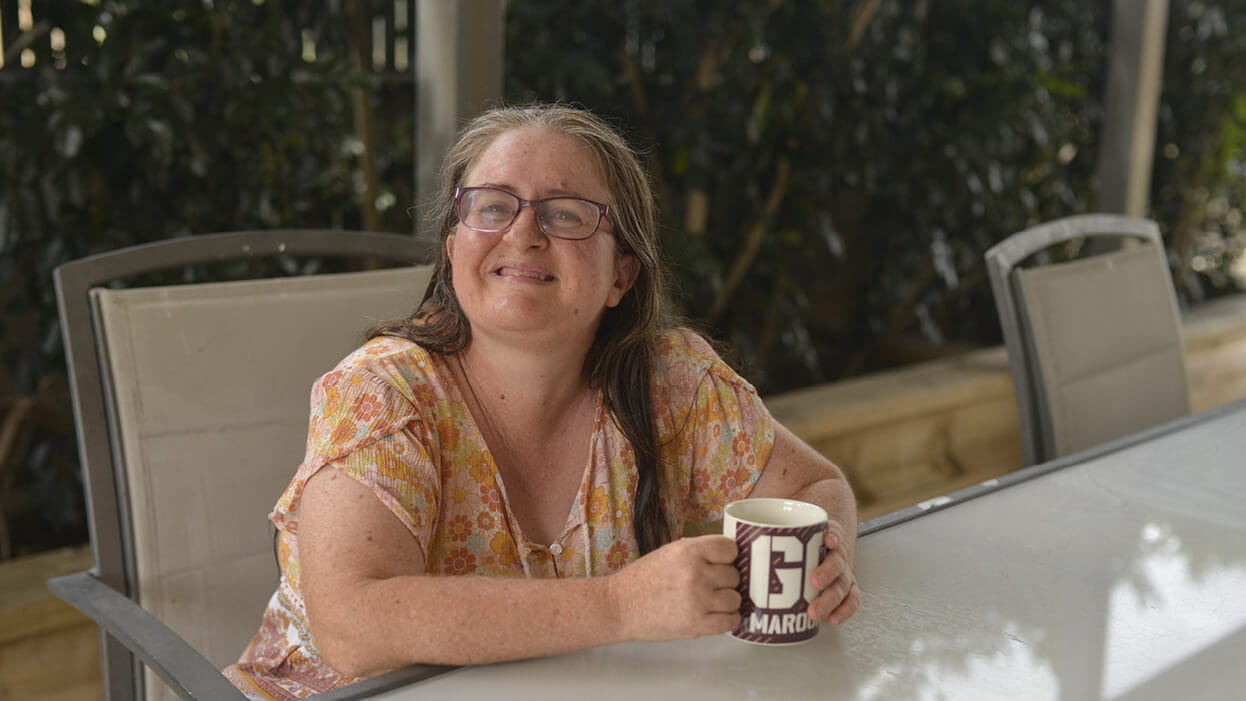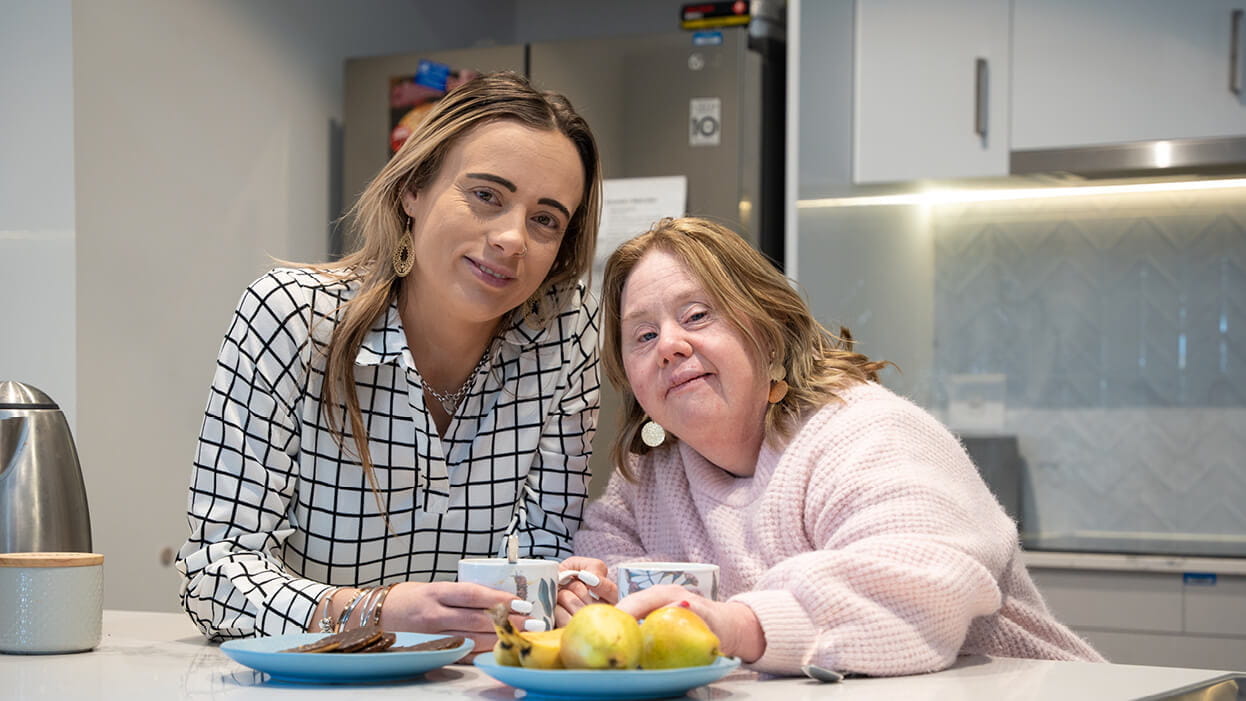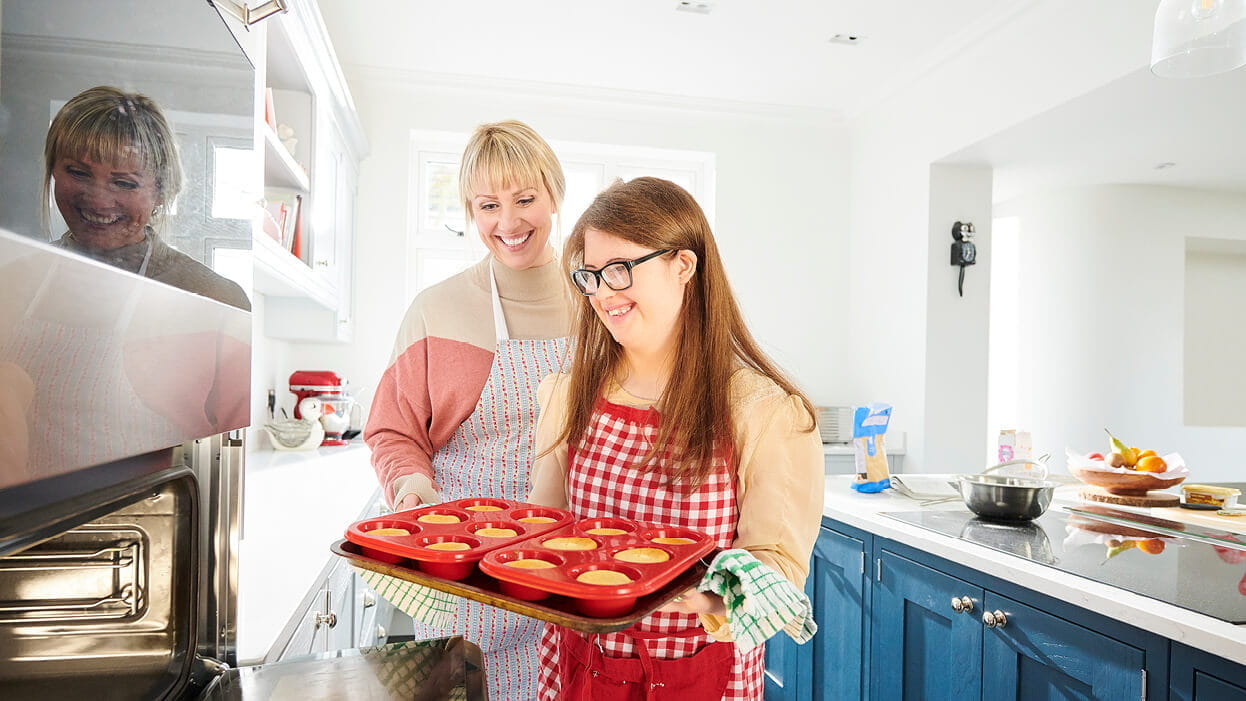What is supported independent living (SIL)?
Supported independent living is the name of the NDIS funding that provides supports to people with disability to help them live as independently as possible.
SIL funding is typically for people who need 24/7 support while living in a shared home. It exists to cover the cost of the support staff in the house.
There is often a lot of confusion about how SIL funding works because it often works a bit differently to other parts of the NDIS.
It’s worth noting that SIL funding can be very complex. Often the best way to work out what it means for you is to talk to someone directly. If you have any questions about it, we encourage you to get in touch with one of our experts by calling 1800 112 112 (it’s free!).
Speak to one of our NDIS experts
What’s the difference between Supported independent living (SIL) and Specialist Disability Accommodation (SDA)?
This can be a bit confusing – especially because they both kind of sound like the same thing.
Essentially, Supported Independent Living is the funding for support services, and the Specialist Disability Accommodation is the accommodation in which those services are delivered.
Here’s a different way to see what that looks like:
An SDA provider
Will look after the house itself – as in the physical structure, similar to a landlord or property management agency. SDA is generally only used when someone has very high needs or “extreme functional impairment”. It’s designed to make sure that people don’t have to pay more for their homes because of their disability. It’s important to note that only a very small percentage of NDIS participants will get SDA funding in their plan.
A SIL provider
Will manage the supports themselves. Essentially this means that a SIL provider will supply the workers to support people in the house with daily living tasks. Generally this is all done with a focus on developing your skills so you can live as independently as possible.And here’s what that generally looks like broken down:
|
A SIL provider |
An SDA provider |
|---|---|
|
Provides support in the house |
Builds or owns the SDA home |
|
Can help with community access outside of the home |
Is generally who you pay your rent to |
|
Helps the residents organise household tasks like preparing food, cleaning etc |
Fix and maintains the house |
|
Manages the staff that work in the house |
Helps address damage |
|
Addresses any complaints about the support providers |
|
|
Screens workers for the house |
|
So... can a provider be both?
Yes, they can. Endeavour Foundation is an example of an organization that is both a SIL provider and an SDA provider.
How do I get Supported Independent Living (SIL) funding?
Like all things with the NDIS, to get funding for something it needs to be deemed reasonable and necessary by your NDIS planner.
When you go in to your planning meeting, you will need to explain to your planner why SIL funding is reasonable and necessary to your circumstances.
Be prepared
We have found that the more someone prepares, the better their chances of receiving their best funding package.
Be clear
One of the most important things to remember going in to your meeting is that the NDIS Planner does not know you. They will only know what you tell them. If the need is urgent or pressing, you will need to articulate this to your planner.
If you’re after more tips on how to ace your NDIS planning meeting – make sure you check out our blog on the topic.
What kind of supports are offered in Supported Independent Living?
|
SIL |
NOT SIL |
|---|---|
|
Help with daily living tasks like shopping, cooking and cleaning |
The cost of your rent |
|
Develop individual plans to help you achieve your goals |
Money for day to day living expenses |
|
Help you to access social and community activities |
Money for groceries and paid activities |
|
Manage and attend appointments with you |
Any items covered in other sections of the NDIS price guide |
|
Utilities like gas, electricity, water and telephone |
|
|
Transport costs |
How does the Supported Independent Living funding work?
The funding for Supported Independent Living works a little differently to most NDIS funding.
|
How most NDIS funding works |
How SIL funding works |
|---|---|
|
· You receive your NDIS plan with dollar amounts to assigned to the various categories. · You decide which service providers you want to go with · You sign on to receive supports |
· You get funding for SIL in your plan, but it doesn’t have an exact dollar amount assigned · You will work with your Support Coordinator and speak to all of the relevant people (OT’s etc) · They will determine your level of support · You will work with your Support Coordinator to find a suitable house · Your SIL provider will do up a quote for the whole house. |
It’s funded individually and the supports can be shared amongst everyone in the house.
A provider will put in a quote for each individual within the house and identify what their ‘typical week’ looks like.
It’s important to note that the NDIS will cover the reasonable and necessary costs of SIL, and you will never be out of pocket for SIL supports. In the vast majority of cases the SIL provider will liaise with the NDIA directly.
What are the levels of SIL funding?
SIL funding is divided in to three levels depending on the level of support required, as well as the number of people living in the shared setting. There are three levels available*:
Lower need – provides supervision of living arrangements and is not usually provided 24/7.
Standard need – provides 24/7 support including active assistance and/or supervision of most daily tasks, overnight sleepovers.
Complex need – provides highly frequent assistance to the individual with: managing challenging behaviours that require intensive positive behaviour support, continual active assistance with all daily tasks, active management of complex medical needs, active support 24/7 including overnight.
*for full descriptions of these categories, please consult the NDIS Price Guide.
Is there a difference between Supported Accommodation and Supported Independent Living (SIL)?
No, they essentially mean the same thing. Supported Accommodation is what it was called before the NDIS came in. Since the NDIS rollout, most people have started calling it Supported Independent Living.
Why is it so hard to find a SIL house?
There is a lot that needs to fall in to place for a Supported Independent Living to be right for someone.
The ratio needs to be right
In your assessment, they will determine the support worker to housemate ratio. That can be anywhere from 1:1* or 1:7. In most instances, everyone in the house will need to have similar ratios to be compatible.
An Occupational Therapist (OT) needs to approve the house for you
Any house you move in to will need OT approval. The OT will do an “assessment” to understand your requirements in a living arrangement. This will help form part of the SIL application. An OT won’t approve each property – but the assessment they do will form whether a customer can be accepted for a property.
This is something you will most likely work with your Support Coordinator to obtain.
You need to be compatible with the other tenants
Like with any house, you will need to be compatible with the people who you are living with, and visa-versa. You wouldn’t move in to a house where you aren’t compatible with people and under the NDIS it’s no different.
*In very rare instances, people may be approved for two support workers per customers if the NDIS deems it reasonable and necessary.
Can you use your SIL funding in your own home or private rental?
Yes you can, Supported Independent Living funding can be used in many places including:
- Special Disability Accommodation
- Private rental
- A house that you own
- Housing through the Department of housing and other similar services
- Shared or group accommodation
Who can help me with Supported Independent Living?
Perhaps the most important part of the Supported Independent Living puzzle is a Support Coordinator. They’re paid by the NDIS to help you navigate the process and liaise directly with allied health and service providers. They will often do a lot of legwork for families. It’s extremely rare for someone to be approved for Supported Independent Living and not have Support Coordinator funding.



